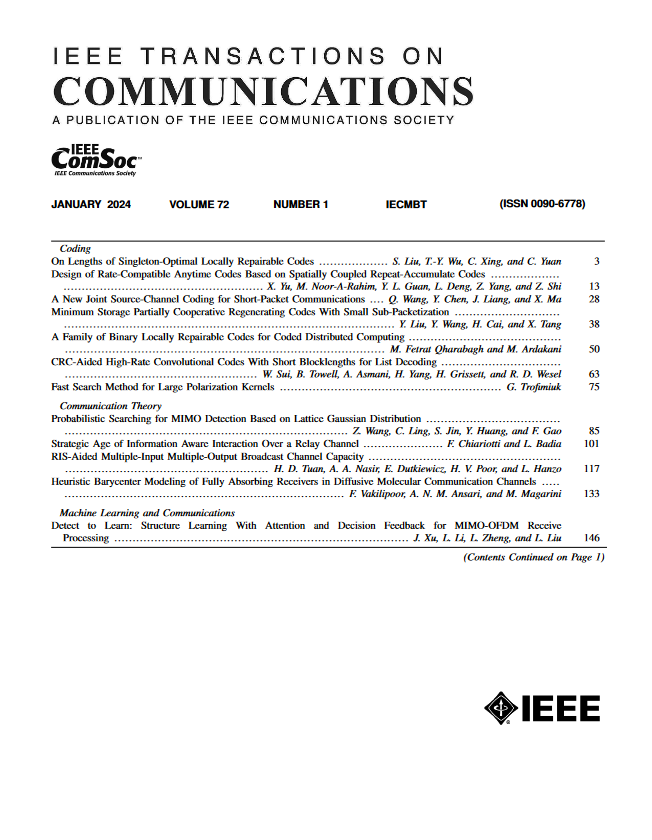不应泊松:不应期对神经频率编码的影响
IF 8.3
2区 计算机科学
Q1 ENGINEERING, ELECTRICAL & ELECTRONIC
引用次数: 0
摘要
神经元的膜电位形成使得其具有耐火性。在这种情况下,耐火效应通常是传统计数分布不能准确描述尖峰序列的主要原因。受这一生物学现象的启发,本文引入了一种计数分布,其中包含一个参数来指定神经尖峰产生的不应期的长度。具体地说,本文考虑了任意两个峰值之间的间隔的下界,它们遵循指数分布或伽玛分布。该分布是泊松分布等标准计数分布的一种广义形式,并被命名为难解泊松分布。本研究旨在为所提出的分布提供估计方法。此外,它还引入了一种新的估计方法,称为“一次”最大似然估计。该研究还为通过单个神经元可靠传递的最大信息量提供了指导。提出了单位成本容量问题中容量实现分配的最优条件,据我们所知,这在文献中尚未报道。所提出的计数分布可用于对任何随机现象进行计数,其中两次发生之间存在不应期。此外,该分布可以应用于各种场景。例如,它可以代替广义线性模型中的泊松分布作为另一种计数分布。本文章由计算机程序翻译,如有差异,请以英文原文为准。
Refractory Poisson: The Effect of the Refractory Period on Neural Rate Coding
The neuron’s membrane potential build-up allows for refractoriness. In this context, the refractory effect is often the primary reason spike trains are not accurately described by traditional counting distributions. Inspired by this biological phenomenon, this paper introduces a counting distribution that includes a parameter specifying the length of the refractory period in neural spike generation. Specifically, the paper considers a lower bound on the intervals between any two spikes that follow an exponential or Gamma distribution. The proposed distribution is a generalized form of standard counting distributions, such as the Poisson distribution, and is named the refractory Poisson distribution. This study aims to provide estimation methods for the proposed distribution. Additionally, it introduces a novel estimation approach called “one-shot” maximum likelihood estimation. The research also provides guidance on the maximum amount of information that can be reliably transferred through a single neuron due to refractoriness. The optimality conditions for the capacity-achieving distribution in the capacity per unit cost problem are presented, which, to the best of our knowledge, have not been reported in the literature. The proposed counting distribution can be used for numbering any random phenomena where a refractory period exists between occurrences. Additionally, the distribution can be applied in various scenarios. For example, it can replace the Poisson distribution in the Generalized Linear Model as an alternative counting distribution.
求助全文
通过发布文献求助,成功后即可免费获取论文全文。
去求助
来源期刊

IEEE Transactions on Communications
工程技术-电信学
CiteScore
16.10
自引率
8.40%
发文量
528
审稿时长
4.1 months
期刊介绍:
The IEEE Transactions on Communications is dedicated to publishing high-quality manuscripts that showcase advancements in the state-of-the-art of telecommunications. Our scope encompasses all aspects of telecommunications, including telephone, telegraphy, facsimile, and television, facilitated by electromagnetic propagation methods such as radio, wire, aerial, underground, coaxial, and submarine cables, as well as waveguides, communication satellites, and lasers. We cover telecommunications in various settings, including marine, aeronautical, space, and fixed station services, addressing topics such as repeaters, radio relaying, signal storage, regeneration, error detection and correction, multiplexing, carrier techniques, communication switching systems, data communications, and communication theory. Join us in advancing the field of telecommunications through groundbreaking research and innovation.
 求助内容:
求助内容: 应助结果提醒方式:
应助结果提醒方式:


